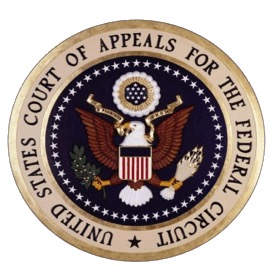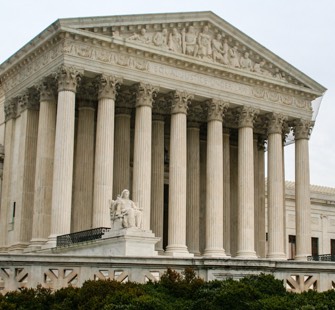PTO Proposes to Eliminate BRI at PTAB
The USPTO recently announced proposed rulemaking that would change the prior policy of using the Broadest Reasonable Interpretation (“BRI”) standard for construing unexpired and proposed amended patent claims in PTAB proceedings under the America Invents Act and instead would use the Phillips claim construction standard. The new standard proposed by the USPTO is the same as the standard applied in Article III federal courts and International Trade Commission (“ITC”) proceedings, a change critics of the PTAB process have urged for many years in order to bring uniformity to post grant challenges across forums.
“Having AIA trial proceedings use the same claim construction standard that is applied in federal district courts and ITC proceedings also addresses the concern that potential unfairness could result from using an arguably broader standard in AIA trial proceedings,” the NPRM says. “Under the proposed approach, the Office would construe patent claims and proposed claims based on the record of the IPR, PGR, or CBM proceeding, taking into account the claim language itself, specification, and prosecution history pertaining to the patent. The Office would apply the principles that the Federal Circuit articulated in Phillips and its progeny.”
CAFC reverses on erroneous application of BRI
 The United States Court of Appeals for the Federal Circuit recently issued a decision in In re Smith International, Inc. As described by Judge Alan Lourie, writing for the unanimous panel (consisting of Judges Reyna and Hughes), “[t]his case primarily concerns what the word ‘body’ means in the context of the ‘817 patent.” More specifically, however, the legal point at issue making this case a precedential decision was how far the Patent Office may go when applying the “broadest reasonable interpretation” (“BRI”). The Federal Circuit decided that in applying the broadest reasonable interpretation, the examiner and Patent Trial and Appeal Board (PTAB) arrived at an unreasonable interpretation not supported by the specification.
The United States Court of Appeals for the Federal Circuit recently issued a decision in In re Smith International, Inc. As described by Judge Alan Lourie, writing for the unanimous panel (consisting of Judges Reyna and Hughes), “[t]his case primarily concerns what the word ‘body’ means in the context of the ‘817 patent.” More specifically, however, the legal point at issue making this case a precedential decision was how far the Patent Office may go when applying the “broadest reasonable interpretation” (“BRI”). The Federal Circuit decided that in applying the broadest reasonable interpretation, the examiner and Patent Trial and Appeal Board (PTAB) arrived at an unreasonable interpretation not supported by the specification.
The examiner interpreted the critical term “body” as being very broad and possible of encompassing other components such as a “mandrel” and a “cam sleeve,” which were taught by the Eddison reference. The Board affirmed this interpretation by the examiner because the specification did not prohibit the examiner’s broad reading of the term “body.”
10.25.17 | Federal Circuit Cases, Patent Issues | Gene Quinn
Supreme Court will decide whether BRI or Phillips standard applies to IPR claims
 During patent examination, pending patent claims are given the broadest reasonable interpretation (“BRI”) that is consistent with the specification, as would be understood by one of ordinary skill in the art. See Phillips v. AWH Corp., 415 F.3d 1303, 1316 (Fed. Cir. 2005).
During patent examination, pending patent claims are given the broadest reasonable interpretation (“BRI”) that is consistent with the specification, as would be understood by one of ordinary skill in the art. See Phillips v. AWH Corp., 415 F.3d 1303, 1316 (Fed. Cir. 2005).
The Patent Office applies the broadest reasonable interpretation in virtually all circumstances. It is, however, true that at least one situation where the Patent Office does not use broadest reasonable interpretation is when a reexamination of a patent is undertaken and reexamination will not be concluded until after the patent term has expired. The position of the USPTO is that, in this situation, a patent could not be changed because the term has expired; therefore, the only remaining “life” a patent has would be in litigation because the statute of limitations for a patent infringement action is six years. Thus, the USPTO applies the Phillips standard. (Further discussion of this advanced topic goes beyond the scope of this article, which is intended to be a primer on the broadest reasonable interpretation standard.)
Supreme Court accepts Inter Partes Review Appeal
 On Friday, January 15, 2016, the United States Supreme Court accepted the petitioner’s request to hear Cuozzo Speed Technologies v. Lee, a case that will now require the Court to address two questions about inter partes review (IPR) proceedings.
On Friday, January 15, 2016, the United States Supreme Court accepted the petitioner’s request to hear Cuozzo Speed Technologies v. Lee, a case that will now require the Court to address two questions about inter partes review (IPR) proceedings.
IPR proceedings were created by the America Invents Act (AIA), which was signed into law by President Barack Obama on September 16, 2011. IPR and the other two forms of post-grant challenge to issued patents — Post Grant Review (PGR) and Covered Business Method (CBM) Review — did not become available as a procedure to challenge patents until September 16, 2012. Thus, these proceedings are quite new and Cuozzo will be the first opportunity for the Supreme Court to weigh in on these controversial administrative proceedings.
According to the statute, “[a] person who is not the owner of a patent may file a petition to institute an inter partes review of the patent.” 35 U.S.C. 311(a). Significantly for this appeal, the statute also says: “The determination by the Director whether to institute an inter partes review under this section shall be final and nonappealable.” 35 U.S.C.314(d). Additionally, although the statute is silent as to the proper claim construction standard to use in post grant proceedings, the United States Patent and Trademark Office (USPTO) has decided to apply the familiar standard used elsewhere throughout the Office, which is the broadest reasonable interpretation (BRI) rather than the so-called “Phillips standard” that is used in district court litigation and narrowly construes claims in an already issued patent. (more…)
02.1.16 | Inter Partes Review, Patent Issues, Supreme Court Cases, USPTO | Gene Quinn


No Comments
06.29.18 | USPTO | Gene Quinn